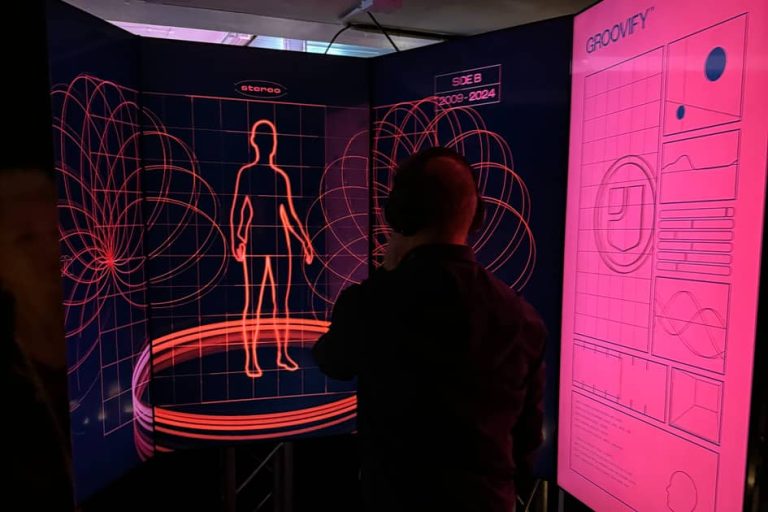Music is a constant companion that helps us express our identities, connect with others and form communities, much like fashion, where runway shows, advertising campaigns and even shopping experiences wouldn’t be the same without their soundtrack.
This relationship between the two is reflected in how we associate certain styles, such as leather jackets with rock fans, or how Taylor Swift fans took inspiration from one of the singer’s ‘eras’ when choosing their concert outfit.
A research group from the LCI Barcelona school has explored this connection to develop an artificial intelligence that can generate playlists based on a person’s appearance. This system is called Groovify and was presented at the Sónar+D festival. This AI-powered tool “analyses a simple photo of a person to extract data such as the clothes they are wearing, their facial expression and their posture. With this information, a playlist is created with personalized songs for that person,” LCI explains.
A unique rhythm for every style
The algorithm behind Groovify analyzes clothing styles through the detection of visual codes, correlating this information with an extensive musical database of the Sónar Festival, spanning three decades. “A person’s look is not just made up of trousers and a top, but also of accessories and complements,” Alessandro Manetti, Head of Europe at LCI and recently appointed Vice President of LCI in Europe, emphasized in an interview with FashionUnited.
“Our professor specialized in artificial intelligence proposed to develop an algorithm and from the fashion field we proposed to link this algorithm to an interpretation of the different looks, the different styles of the garments through a detection of visual codes,” adds Manetti.
The application then creates up to five different prompts
A prompt is an instruction, question, or text used to communicate with artificial intelligence systems.
with which a unique single generated for each person, with a rhythm and sounds that represent the look of the photographed user.
“We wanted to go beyond just generating suggestions based on clothing style, we wanted to create a whole new song generated by artificial intelligence and pay homage to the vinyl record with an imaginary cover”
The result includes not only the suggestion of playlists based on someone’s clothing style, but also the creation of a mobile application that can recommend music tailored to the user’s look, as well as the creation of a completely new song, created by artificial intelligence and based on the database of Sónar’s artists. This music would also be accompanied by an imaginary cover designed using image generation applications.
The process of associating style and music is based on a thorough investigation of existing databases, analysing styles, music, covers and visual codes in discographies and photos of concerts and audiences. Manetti explains: “We wanted to go beyond simply generating suggestions based on clothing style, we wanted to create a completely new song generated by artificial intelligence and pay homage to the vinyl record with an imaginary cover”.
The project’s response at the Sónar Festival was very positive, both from the public and from interested investors. The technology used is a proprietary algorithm, which has increased interest in its exclusivity and originality. Looking to the future, the project’s developers plan to launch an improved version, 2.0, in October.
Groovify 2.0 will be released in October
This new version will expand the database with additional sources such as Spotify, YouTube and Beatport, with the aim of making the application more relevant and useful in the market. In addition, the team is preparing to participate in the Web Summit in Lisbon in November, where they will present the beta version of the application and look for partnerships and business opportunities.
The project, led by Alessandro Manetti and coordinated by Mariele Violano, is supported by area directors Pedro Coelho, Estel Vilaseca, Anna Pallerols, David Carretero and Salvatore Elefante. The team consists of 19 people, including six students who work on graphic design, interior design, user support and assembly and demolition.
Video source: LCI Barcelona via Youtube, courtesy of LCI Barcelona.
This article was previously published on FashionUnited ES. Translation by AI, editing and clarification by Caitlyn Terra.


